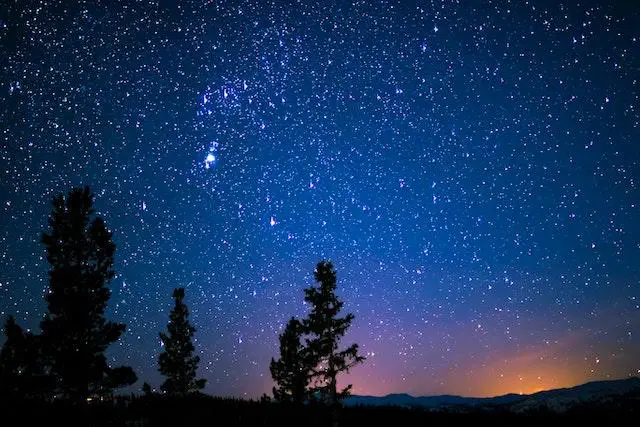
If you gaze upward at the stars on a tranquil night, you’ll probably observe that these bright points of light appear to twinkle. However, in reality, stars don’t actually twinkle.
Most people believe that stars twinkle because they are far away, but the truth is that it has more to do with Earth’s atmosphere.
As starlight enters our dense and warm atmosphere, it becomes distorted by things like winds. This is what causes the light from a star to appear as though it’s twinkling when seen from the ground.
In this article, we will explore this effect in greater detail.
Why do stars twinkle?
As mentioned earlier, it’s not the stars themselves that are twinkling. Instead, it’s the Earth’s atmosphere that causes this effect.
When starlight enters our atmosphere, it encounters different layers of air with varying temperatures and densities.
This can cause the light to bend or distort in random ways before reaching our eyes on the ground.
These distortions are similar to the way heat waves can distort objects when viewed from far away on a hot day, causing them to appear as though they are shimmering or twinkling.
In addition, winds high up in the atmosphere can also cause the starlight to twinkle. As the air moves, it can further bend and distort the star’s light before it reaches us.
While it may be tempting to believe that twinkling stars are magical, the truth is that they are simply a product of Earth’s atmospheric conditions.
Nevertheless, their delicate dance across the night sky is still a sight to behold.
- Read also: What Is The Difference Between Dark Matter And Dark Energy
- Read also: How Rare Are Shooting Stars
What is atmospheric refraction?
Atmospheric refraction is the bending of light as it passes through the atmosphere. This occurs because the atmosphere acts like a lens, refocusing the light as it passes through.
The amount of bending depends on the density of the air and the wavelength of the light.
For example, blue light is bent more than red light because it has a shorter wavelength.
Refraction also depends on the temperature of the air. Warm air is less dense than cold air, so it bends light less than cold air does.
Atmospheric refraction can have several effects on light. For example, it can cause objects to appear higher in the sky than they actually are.
It can also cause objects to appear to move as the air temperature changes.
Finally, atmospheric refraction can cause mirages, which are images that appear to be in a different location from where they actually are.
Although atmospheric refraction is usually invisible, it can have a significant impact on our perception of light.

Why don’t planets twinkle?
Planets, on the other hand, do not twinkle for two reasons.
- First, they are much closer to us than stars, which means that their light does not have to travel through as much of Earth’s atmosphere before we can see it.
- Second, planets are much larger than stars, so their light is not as affected by small atmospheric disturbances. As a result, planets appear steady and constant in the night sky.
So the next time you’re looking up at the stars on a clear night, remember that you actually see distant suns, billions of miles away, whose light has been distorted by its journey through Earth’s atmosphere.
And if you’re lucky enough to see a planet in the night sky, you’re seeing an object that is relatively close to us and whose light has not been significantly affected by its journey through the atmosphere.
- Read also: What Would Happen If Asteroid Apophis Hit Earth
- Read also: What would happen if the speed of light was significantly slower
Final words
Stars twinkle because of the way that light waves interact with the atmosphere. As light waves pass through the atmosphere, they are bent and refracted by the different layers of air.
This causes the light to appear to shimmer and dance as if it were being viewed through a rippling sheet of water.
The exact amount of twinkling is determined by a number of factors, including the temperature and density of the atmosphere, as well as the viewer’s distance from the star.
While twinkling may be beautiful to behold, it can also be frustrating for astronomers, who must account for this effect when trying to gather precise data about stars.
Nevertheless, the twinkling of stars has captivated humanity for millennia and is sure to continue to do so for many years to come.



